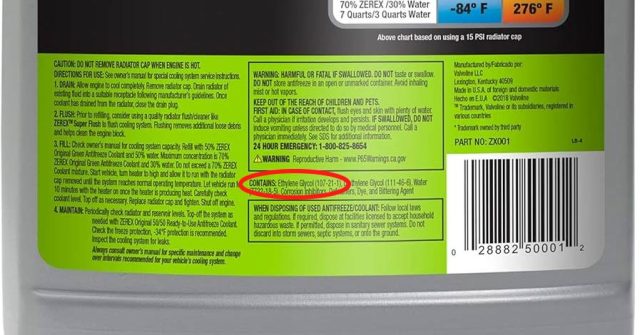%%date%% %%sep%% %%sitename%%
The exhaust from a diesel engine should smell like that good ole burning diesel smell and nothing else mixed with it. Unless of course, you have a newer diesel with a DEF system.
The current DEF (diesel exhaust fluid) systems eliminate almost any smell from the exhaust, and you can practically breathe the exhaust coming out (not that you’d want to, though).
But what if your exhaust has some other smell? Does it smell sweet or bitter? Does that mean something is wrong with your diesel truck?
If your diesel truck’s exhaust smells sweet, it usually indicates that coolant has entered the combustion chamber and burned off with the fuel.
The coolant, usually ethylene glycol mixed with water, creates a sweet smell because of its composite makeup.
Ethylene glycol has a sweet smell by itself; adding the burning factor greatly amplifies the smell.
There are only a few main ways coolant can enter a standard diesel’s combustion chamber. Read on to find the potential cause of your problem.
Why is My Diesel Engine Using Coolant?
If you are experiencing coolant loss but don’t have a visible leak, it’s most likely because the coolant is being burned off. As we said before, this happens when the coolant somehow enters the combustion chamber and burns with the fuel. How does the coolant get in there, though?
Reasons A Diesel Will Burn Coolant
Blown Head Gasket
Source: Reddit
The first and probably most common among diesels is a blown head gasket. Head gaskets are seals made from various materials and are located between the engine block and cylinder head. They provide a barrier between the combustion chamber and coolant passages to prevent coolant and oil from mixing.
When this gasket ‘blows,’ it means the seal between the coolant and combustion chamber is no longer intact. This allows coolant to enter the combustion chamber and burn off with the fuel. The gasket will blow when the cylinder pressure becomes too great to handle.
Higher cylinder pressure can also cause the head studs to stretch on some engines, resulting in a weak gasket seal.
Cracked Heads or Damaged Block
This is uncommon but still happens occasionally. The cylinder head can become cracked or damaged, usually from overheating or running the engine past its maximum RPM.
Obviously, a crack or fracture will cause coolant to leak into the combustion chamber, burning off and exiting through the exhaust.
Damaged Manifold
The intake manifold is another engine part that could allow coolant to sneak into the combustion chamber. Because coolant runs through it, if the manifold is damaged or cracked, it will let coolant into the intake passage, pulling it through the engine and burning it off.
How Can You Tell If You Have a Bad Head Gasket?
Out of all the various reasons a vehicle may burn coolant, a blown head gasket is by far the most common cause. There are several symptoms an engine will exhibit when/if a head gasket is blown. Here is what to look for.
Bubbles In Radiator/Overflow
This is the best and most surefire way to test for a blown head gasket. First, remove the radiator cap when the truck is off and cold. Then, start the cold engine with the cap off, let it idle, and observe.
A blown head gasket allows exhaust gases to escape into the cooling system, creating bubbles in the radiator. If you see bubbles, it is a good idea to get a combustion leak test kit, which will give you a positive reading on whether or not exhaust gases are present in the coolant system.
Using a combustion leak test kit. Exhaust gasses are present in the coolant system if the liquid turns yellow. [source video]
Engine Overheating
A blown head gasket is often accompanied by an overheating engine because the coolant levels continuously drop as it gets burned off and leaked away. This allows for overheating and possible further damage to the engine itself such as warped or cracked pistons/cylinder heads, damaged block, etc.
Milky Residue In Oil
Source: Reddit
When oil is mixed with water, it becomes a milky goo. This is exactly what may happen with a blown head gasket, as the coolant that enters the combustion chamber seeps past the piston rings and mixes with the oil supply.
This is another big issue because the oil’s lubricity is compromised when water is introduced. Just another reason that if you think you have a blown head gasket, you need to deal with it promptly.
Visible Coolant Leaks From Manifold
When the head gasket is blown, it is not uncommon to see coolant leaking externally from the exhaust and/or intake manifold because the coolant allowed into the cylinder gets pushed out through these parts.
Why Is There Diesel Fuel In My Coolant?
Cracked or Worn Injector Cups or O rings
This usually results in diesel fuel in the coolant reservoir rather than burning, although coolant can leak into the combustion chamber while the vehicle is off and burn off when it is started.
Over time, the injector cups and fuel injector O rings can become cracked or worn, creating a direct passage for the coolant and fuel to mix. Because of the high compression, the fuel is usually pushed into the coolant system rather than vice versa while the engine is running.
This ordinarily only applies to HEUI-injected engines like the 7.3L and 6.0L Ford Powerstroke engines.
Final Thoughts
If your exhaust smells sweet, do not ignore it. Again, the easiest and best way to determine whether it’s a head gasket is to perform a simple combustion leak test.
That will give you a good idea of what you are dealing with. If you believe it may be a head gasket, it is a good idea to get it taken care of sooner than later.
We hope this was helpful, and good luck with your repairs! At ProSource Diesel, we pride ourselves on the wide array of parts and accessories we offer to fuel your passion for diesel trucks.
Have questions? Contact us today for more information about our diesel truck parts and kits.
%%excerpt%%
The post Why Does My Diesel Exhaust Smell Sweet? appeared first on Prosource Diesel.
%%category%%
%%tag%%







